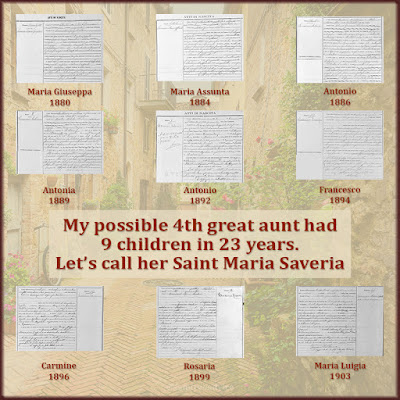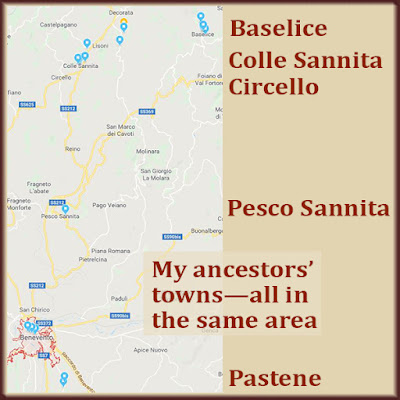You may not have 417 blog articles that document your family tree research plans. You may not write down your theories, or the steps you took to make new discoveries. But I do.
I've written so many articles that I can re-read them and have no memory of the big discoveries they describe. It's clear I need to revisit my past ideas and make good on their promise.
My advice is that you start keeping a genealogy journal. It can be handwritten or in something like OneNote, if that's your preference. It can even be a plain text file, which is my choice. Whichever you choose, Keep Track of Your Genealogy Theories and Tasks. And revisit your journal often.
 |
| You got to keep track of your family tree discoveries. Revisit your genealogy journal often. |
I try to do a bit of work on my family tree every day, and I spend the weekend tackling big research projects. All too often I can't find the time to follow my own advice to you, like:
- It's Time to Review Old Genealogy Messages. There's a Word doc on my computer, waiting for me to review and follow-up on old conversations.
- Catch and Fix Your Missing Source Citations. I created a better list of unsourced family tree facts by using Family Tree Maker, rather than Family Tree Analyzer. Three months later, I've only begun to work my way through it.
- Use Every Tool to Solve a Family History Mystery. More than a year ago I hit upon one ancestor with a strong likelihood of being my parents' common ancestor. (They share DNA.) I decided to seek out every possible descendant of this 3rd great grandfather. But I haven't yet.
I have so many open family tree research projects, I'm never at a loss for something interesting to do. But I would like to finish some of them!
Weekend is coming. How will I spend those hours of research time? Two recent projects are calling out to me the loudest:
- Imagine a Register of Your Entire Ancestral Hometown. I have a book detailing every single person in Grandpa's hometown in the year 1742. I want to work them all into my family tree. (The whole town's related.) I know I can finish my first pass this weekend. I'm up to household 343 out of 560. About one-fourth of them will be easy to place in my tree.
- Be More Thorough with Your Family Tree. I began looking at every person in my family tree with my maiden name, Iamarino. That's a lot of people. For each one, I'm searching their hometown's vital records for their missing documents. I'm completing each person as much as I can. I'm marking in my document tracker which documents I've found, and which are not available.
OK, it looks as if I've got my weekend genealogy plan. I'll work my way through that book, making sure I find any available records for each person I add to my tree.
Then next week I'll continue fully documenting every Iamarino in my family tree. I'm up to those with a first name of Giuseppe.
How can you make good on your past genealogy promises to yourself? Your genealogy journal would answer that question.







